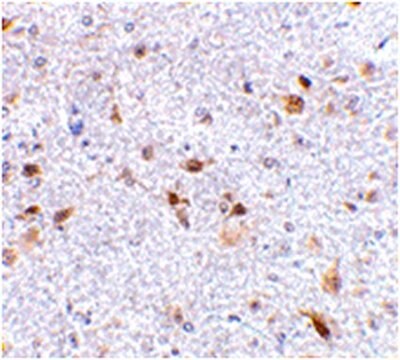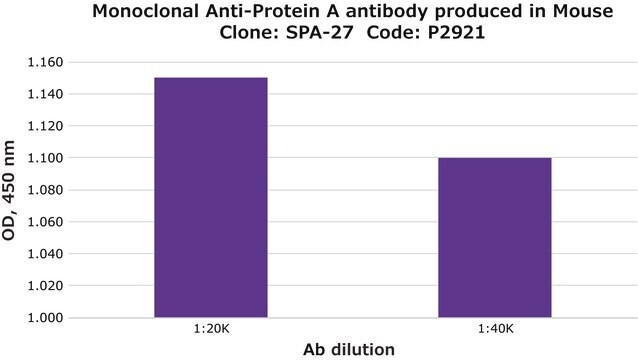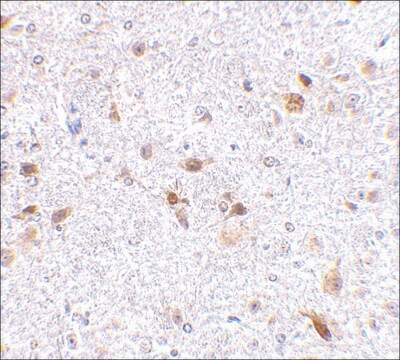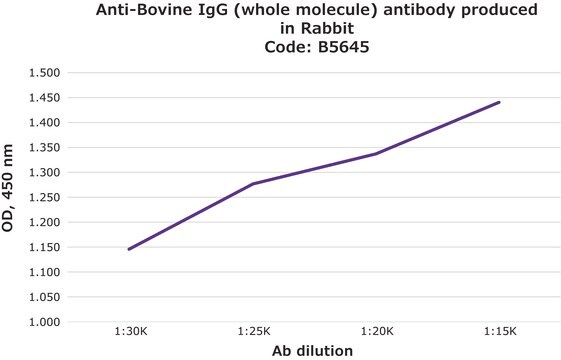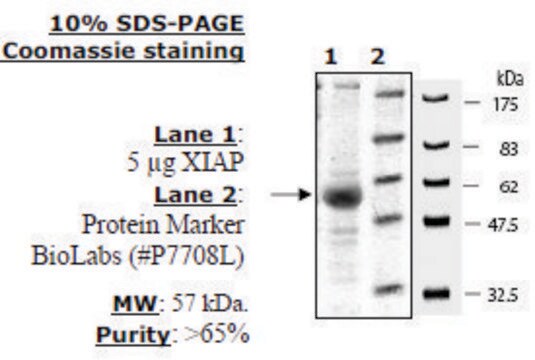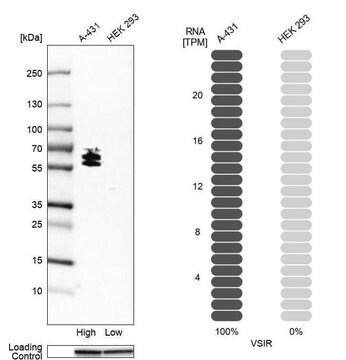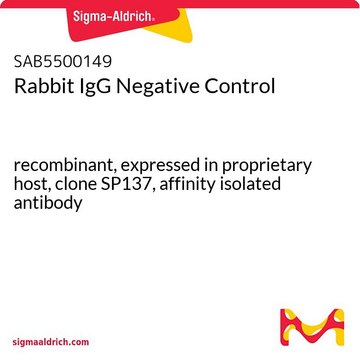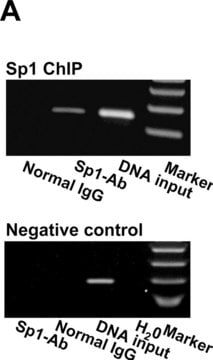推薦產品
生物源
mouse
品質等級
抗體表格
purified immunoglobulin
抗體產品種類
primary antibodies
無性繁殖
366C.12.9E5.E10.19.1F8, monoclonal
物種活性
human
包裝
antibody small pack of 25 μg
技術
immunohistochemistry: suitable (paraffin)
同型
IgG1κ
NCBI登錄號
UniProt登錄號
目標翻譯後修改
unmodified
基因資訊
human ... PDCD1LG2(80380)
一般說明
Programmed cell death 1 ligand 2 (UniProt: Q9BQ51; also known as PD-1 ligand 2, PD-L2, PDCD1 ligand 2, Programmed death ligand 2, Butyrophilin B7-DC, B7-DC, CD273) is encoded by the PDCD1LG2 (also known as B7DC, CD273, PDCD1L2, PDL2) gene (Gene ID: 80380) in human. Three isoforms of PD-L2 have been reported that are produced by alternative splicing. Isoforms 1 and 2 are single-pass type I membrane proteins and isoform 3 is a secreted protein. PD-1 and PD-1 ligands 1 and 2 (PD-L1 and PD-L2) are B7:CD28 family members that regulate T cell activation and peripheral tolerance. When engaged together with the TCR, the interaction of PD-1 with its ligands delivers an inhibitory signal to T cell proliferation and cytokine production. While PD-L1 is broadly expressed in hematopoietic and non-hematopoietic cells, PD-L2 expression is highly restricted to antigen presenting cells (APCs), including dendritic cells (DCs) and macrophages. The PD-1 pathway plays a key role in the progressive loss of effector T cell responses during chronic HIV infection. Under some conditions, blockade of this pathway can restore many T cell functions. PD-L2 is initially produced with signal peptide (aa 1-19) that is removed to produce the mature protein that contains a large extracellular region (aa. 20-220), a transmembrane domain (aa 221-241), and a cytoplasmic tail (aa 242-273).
特異性
Clone 366C.12.9E5.E10.19.1F8 specifically detects PD-L2 in human cells. It targets an epitope within the extracellular domain.
免疫原
Epitope: extracellular domain
Recombinant protein fragment corresponding to the extracellular domain of human PD-L2 (as an Ig fusion protein).
應用
Anti-PD-L2, clone 366C.9E5, Cat. No. MABC1120, is a mouse monoclonal antibody that detects Programmed cell death 1 ligand 2 (PD-L2) and has has been tested for use in Immunohistochemistry (Paraffin).
Immunohistochemistry Analysis: A 1:250 dilution from a representative lot detected PD-L2 in human prostate tissue.
Immunohistochemistry Analysis: A representative lot detected PD-L2 in Immunohistochemistry applications (Sridharan, V., et. al. (2016). Cancer Immunol Res. 4(8):679-87; Roemer, M.G., et. al. (2016). J Clin Oncol. 34(23):2690-7; Chong, L.C., et. al. (2016). Blood. 128(9):1206-13; Calles, A., et. al. (2015). J Thorac Oncol. 10(12):1726-35).
Immunohistochemistry Analysis: A representative lot detected PD-L2 in Immunohistochemistry applications (Sridharan, V., et. al. (2016). Cancer Immunol Res. 4(8):679-87; Roemer, M.G., et. al. (2016). J Clin Oncol. 34(23):2690-7; Chong, L.C., et. al. (2016). Blood. 128(9):1206-13; Calles, A., et. al. (2015). J Thorac Oncol. 10(12):1726-35).
Research Category
Apoptosis & Cancer
Apoptosis & Cancer
品質
Evaluated by Immunohistochemistry (Paraffin) in human tonsil tissue.
Immunohistochemistry Analysis: A 1:250 dilution of this antibody detected PD1-L2 in human tonsil tissue.
Immunohistochemistry Analysis: A 1:250 dilution of this antibody detected PD1-L2 in human tonsil tissue.
標靶描述
30.96 kDa calculated.
外觀
Protein G purified
Format: Purified
Purified mouse monoclonal antibody IgG1 in buffer containing 0.1 M Tris-Glycine (pH 7.4), 150 mM NaCl with 0.05% sodium azide.
儲存和穩定性
Stable for 1 year at 2-8°C from date of receipt.
其他說明
Concentration: Please refer to lot specific datasheet.
免責聲明
Unless otherwise stated in our catalog or other company documentation accompanying the product(s), our products are intended for research use only and are not to be used for any other purpose, which includes but is not limited to, unauthorized commercial uses, in vitro diagnostic uses, ex vivo or in vivo therapeutic uses or any type of consumption or application to humans or animals.
未找到適合的產品?
試用我們的產品選擇工具.
分析證明 (COA)
輸入產品批次/批號來搜索 分析證明 (COA)。在產品’s標籤上找到批次和批號,寫有 ‘Lot’或‘Batch’.。
我們的科學家團隊在所有研究領域都有豐富的經驗,包括生命科學、材料科學、化學合成、色譜、分析等.
聯絡技術服務